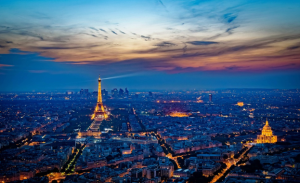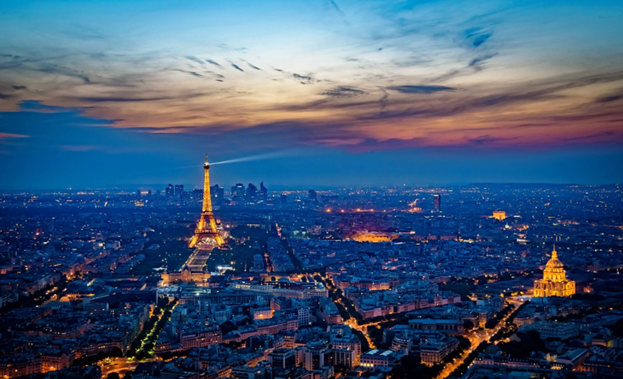Whether traveling to Paris for a romantic getaway or exploring the iconic landmarks, finding affordable flights to Paris from lax can often be challenging.
Most major carriers charge top-dollar for non-stop transfers between the two cosmopolitan cities. This is where Frenchbee, a boutique airline based in France, offers a surprisingly budget-friendly option. Frenchbee operates direct flights aboard comfortable Airbus A350 aircraft from Los Angeles International Airport to Paris-Orly Airport starting at just $309 one-way.
With competitive prices, gracious onboard service, and convenient flight schedules, Frenchbee transforms transatlantic air travel on a budget.
The Best Time to Fly to Paris
Certain months tendare cheaper and more popular for flying to Paris than others. Spring and fall usually offer the best deals. Flying in March, April, May, September, or October means avoiding the hottest summer temperatures and the coldest winter weather.
The spring months of April and May have pleasant temperatures but aren’t as busy as summer. Falthe l, September, and October are great times to visit, with the mild weather and fewer crowds. January, February, and December are the most expensive months, as fewer people travel during these times.
July and August see a spike in prices as well since it’s vacation season in Europe. Whether you want to save money or enjoy Paris at its best, aim to fly in spring or fall whenever possible.
What to Do in Paris?
Paris is one of the most romantic and beautiful cities in the world. There are so many amazing things to see and do there.
- One of the top attractions is the Eiffel Tower. It’s super tall and you can go to the top for amazing views of the whole city.
- Also make sure to visit Notre Dame Cathedral. It’s a huge beautiful old church with pointed arches and sculptures.
- The Louvre Museum has the Mona Lisa painting and other famous art. You could spend days looking at everything.
- Along the Seine River, you can relax in the parks or rent a boat and cruise through the city.
- Another cool spot is Arc de Triomphe, which sits at the end of the Champs-Elysées, a famous street with shops and cafes.
- For snacks, grab a baguette from a bakery or try crepes filled with Nutella or cheese and ham.
- The Palace of Versailles outside Paris is also amazing, with its royal rooms and gardens.
What Are Some Popular Tourist Attractions in Paris?
Here are some of the most popular tourist attractions in Paris:
- Eiffel Tower – The iconic symbol of Paris offers stunning views of the city from its three levels.
- Notre Dame Cathedral – This Gothic masterpiece dates back to the 12th century and features iconic architecture like flying buttresses.
- Arc de Triomphe – Situated at the western end of the Champs-Elysées, this landmark arch is the largest in Paris.
- Louvre Museum – Home to one of the largest art collections in the world, including the iconic Mona Lisa painting.
- Palace of Versailles – An opulent royal chateau and estate known for its elaborate halls, gardens, and fountains.
- Champs-Elysées – This famous boulevard stretches for over 1 mile and has shops, cafes, and restaurants.
- Sacré-Cœur Basilica – A majestic church located in Montmartre overlooking the city, popular at sunset.
- Notre Dame Gardens – Relaxing gardens bordering the Seine, perfect for picnics or weekend activities.
- Pompidou Center – A striking modern art museum home to works by Picasso, Matisse, and more.
- Latin Quarter – The historic area is known for its bookshops, cafes, and streets like Boulevard Saint-Michel.
Frequently Asked Questions
What are the departure and arrival airports for the Los Angeles-Paris flight?
The departure airport for flights from Los Angeles to Paris is Los Angeles International Airport (LAX). The arrival airport is Paris-Orly Airport (ORY), located south of Paris.
How long is the flight from Los Angeles to Paris?
The non-stop flight from Los Angeles to Paris is approximately 9 hours and 30 minutes on Frenchbee’s Airbus A350 aircraft.
What is the time difference between Los Angeles and Paris?
There is an 8-hour time difference between Los Angeles, California, and Paris, France. When it is 9:00 pm in Los Angeles, it will be 5:00 pm the next day in Paris. So travelers will lose a day upon arriving in Paris from LA. Summers have relatively longer daylight hours in Paris compared to Los Angeles.
Conclusion
In summary, finding affordable flights to the iconic city of Paris from Los Angeles can be smooth if you consider the lesser-known carrier, Frenchbee.
As more travelers look to enjoy foreign destinations without breaking the bank, airlines like Frenchbee that offer direct routes across the pond at competitive fares make once-expensive journeys accessible to all. Whether traveling solo or bringing friends and family, Frenchbee provides a relaxing, affordable way to fly to the City of Lights from LAX.
Be sure to check their consistently updated flight schedule and book well in advance to take advantage of their best airfare deals.








